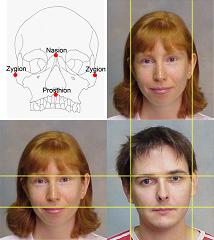
Reproductive history was determined by number of births. Smoking habits were estimated by number of cigarettes per week during premenopausal phase. Nevertheless, this method was used, because status quo method was not applicable in this study. We are aware about the limitation of retrospective methods, especially in comparison with the status quo method. This technique relies on self‐reported age at menopause and is reputed not to be exact. Age at menopause was determined using retrospective method exclusively. Questionnaires containing questions about age at menopause, smoking habits, reproductive history and physical activity patterns were distributed. Recruitment of participants and data collection took place in the consulting rooms of various of Gynecologists, special Gyms for women and via snowball system in Vienna, Austria. The aim of the present study was the analysis of association patterns between 2D:4D ratio and age at menopause. The 2D:4D ratio as a proxy of intrauterine sex hormone levels, correlates significantly with various somatic features, fertility parameters, behavioral traits (Fink, Manning, & Neave, 2004 Klimek, Galbarczyk, Nenko, Alvarado, & Jasienska, 2014 Klimek, Galbarczyk, Nenko, & Jasienska, 2016 Lyons, 2013 Manning, Scutt, Wilson, & Lewis‐Jones, 1998) but also pathologies such as breast cancer risk (Muller et al., 2012). The underlying mechanism for the correlation between 2D:4D and prenatal sex hormone levels may be the action of the Homeobox genes, which control the differentiation of digits but also of the gonads, that is, testes and ovaries (Manning, 2011). Prenatal testosterone correlates negatively with the 2D:4D ratio while prenatal estrogen levels are positively associated with 2D:4D ratio (Manning, 2011). A putative indicator of prenatal sex hormone levels is the ratio between second and fourth finger lengths (2D:4D) (Galis, Ten Broek, Van Dongen, & Wijnaendts, 2010). In detail, the early sex hormone exposure was focused on. In the present study, the effect of another aspect of prenatal environment on menopausal age was tested. Although it is well established that conditions in the prenatal environment have long lasting effects into postnatal life and even up to adulthood, only few studies investigated the effects of intrauterine environment on the timing of menopausal transition, such as the association between birthweight, as an indicator of prenatal conditions and age at menopause (Tom, Cooper, Kuh, Guralnik, & Power, 2010). The effects of various socioeconomic, life style and ecological factors on age at menopause are described extensively (Lujan‐Barroso et al., 2018). Therefore, the analysis of those factors that influence age at menopause has a special significance. It is well known, that a later age at menopause is associated with greater life expectancy, reduced risk of cardiovascular disease and atherosclerosis, osteoporosis, but an increased risk of breast, ovarian and endometrial cancer (Gold, 2011). Age at menopause is not only a marker of reproductive senescence and general aging, but also of general health (Gold, 2011). Therefore, menopause signifies the irreversible end of female reproductive capability and represents an important transition in female life history. I have followed all appropriate research reporting guidelines and uploaded the relevant EQUATOR Network research reporting checklist(s) and other pertinent material as supplementary files, if applicable.Menopause is the time when there has been no menstruations for at least 12 consecutive months.
#HIGHER 2D 4D RATIO WOMEN REGISTRATION#
I confirm that any such study reported in the manuscript has been registered and the trial registration ID is provided (note: if posting a prospective study registered retrospectively, please provide a statement in the trial ID field explaining why the study was not registered in advance). I understand that all clinical trials and any other prospective interventional studies must be registered with an ICMJE-approved registry, such as. Necessary IRB and Ethics approval obtained prior to submissionĪll necessary patient/participant consent has been obtained and the appropriate institutional forms have been archived. The details of the IRB/oversight body that provided approval or exemption for the research described are given below: I confirm all relevant ethical guidelines have been followed, and any necessary IRB and/or ethics committee approvals have been obtained. No funding was obtained Author Declarations The authors have declared no competing interest.

Preventive interventons can be initiated for those with at risk finger pattern Low 2D:4D ratio has as positive correlation to radiographic severity of KOA Low 2D:4D ratio and Type 3 finger pattern is associated with increased KOA risk Evaluation of finger patterns reveals an association with osteoartritis knee (KOA)


 0 kommentar(er)
0 kommentar(er)
